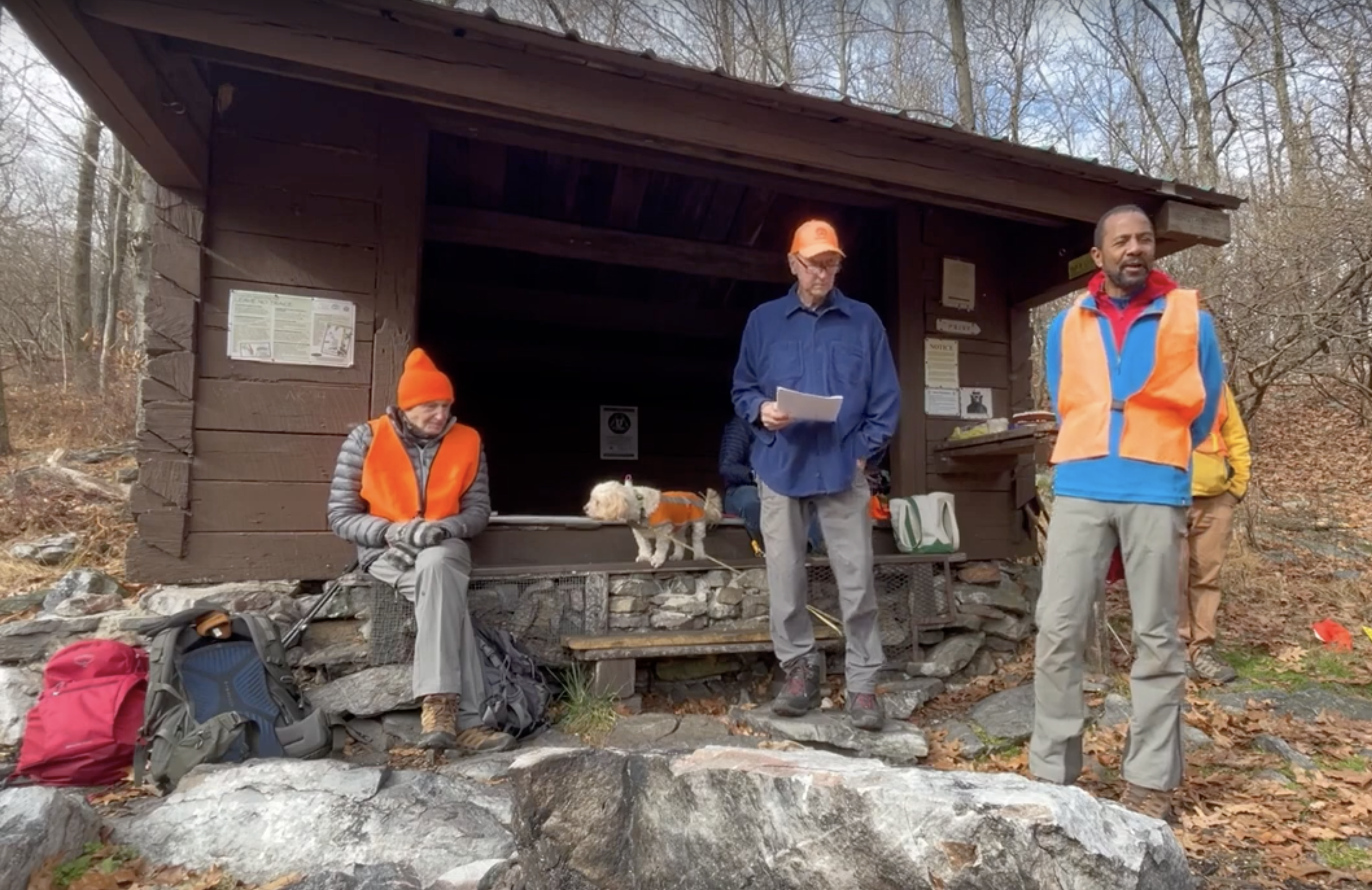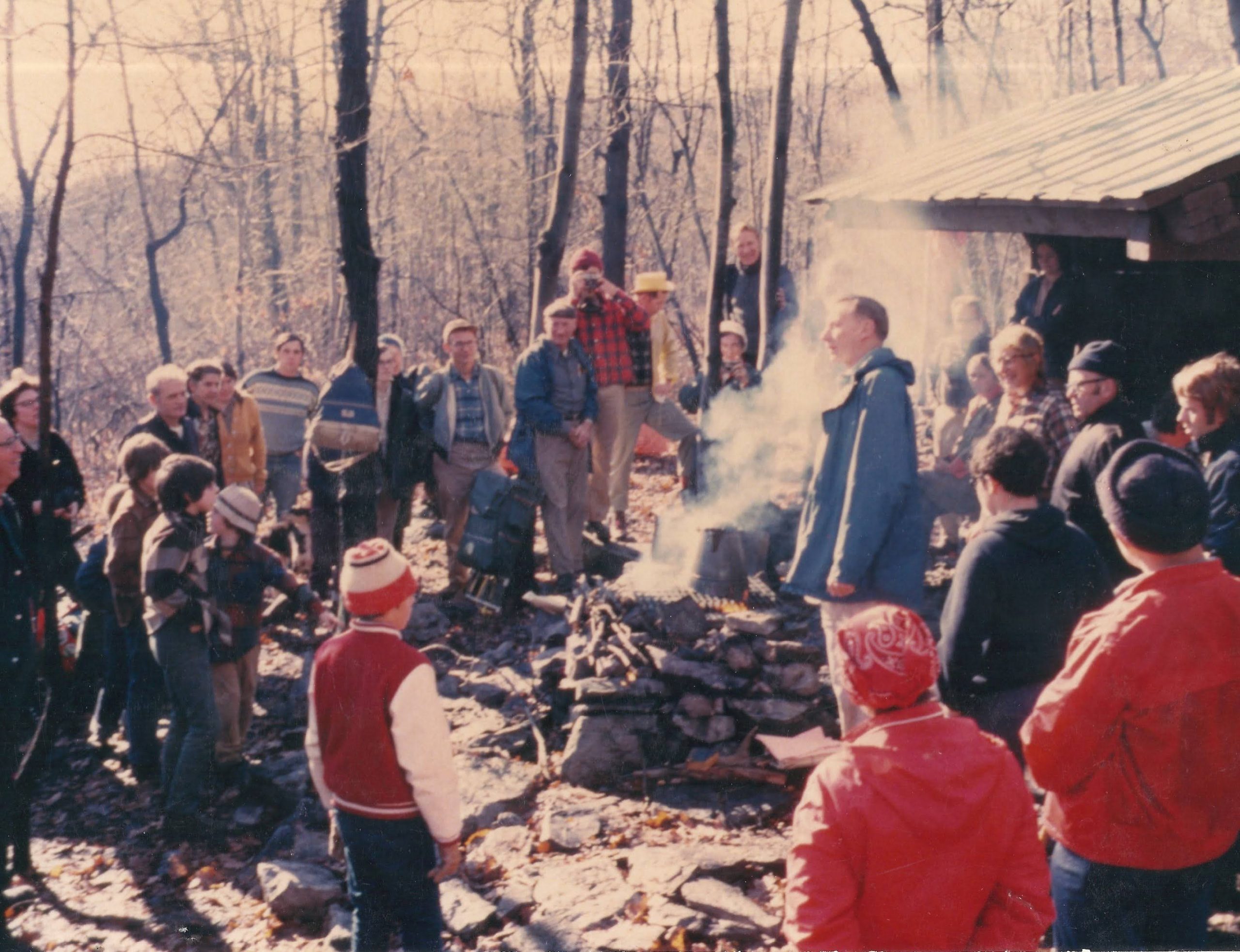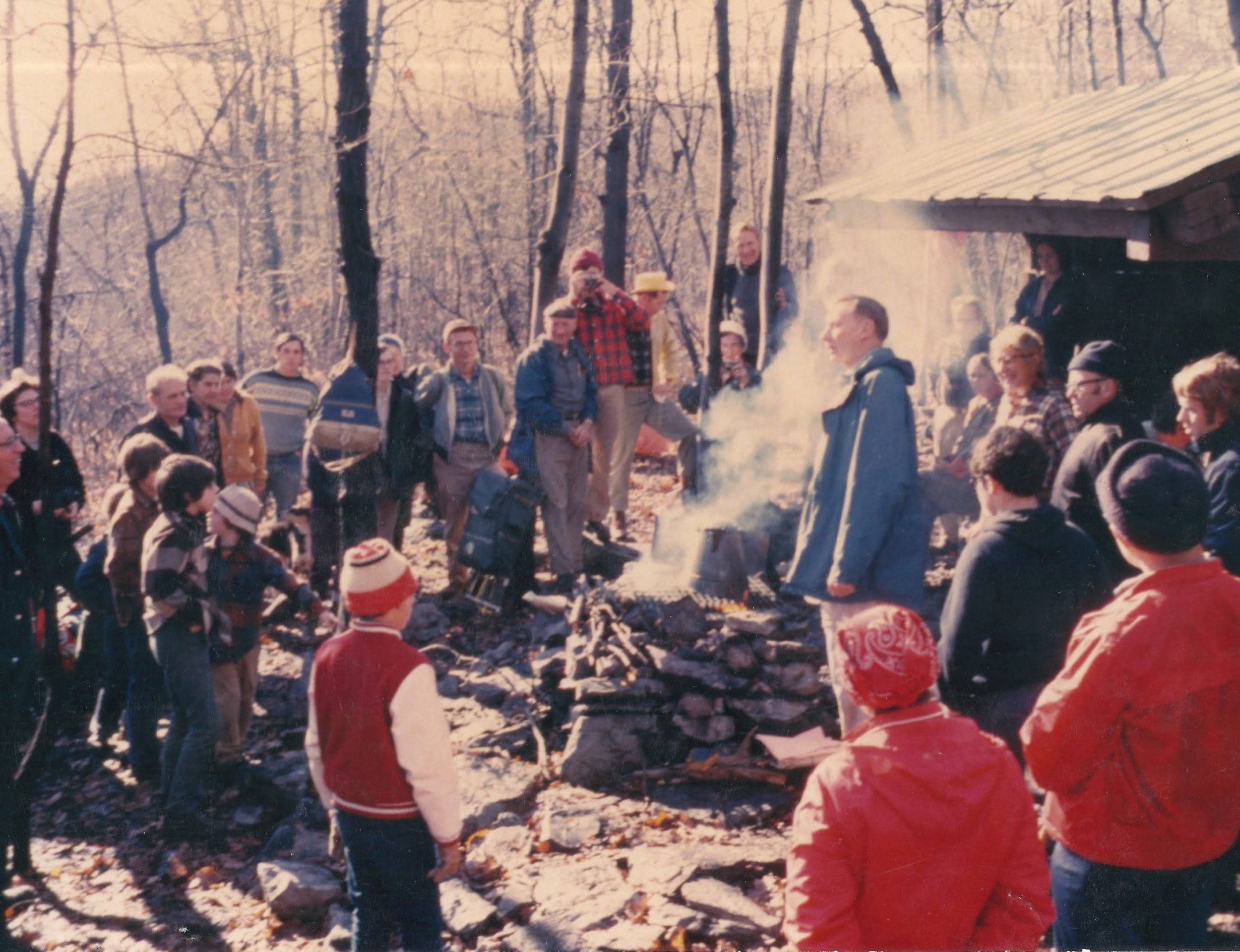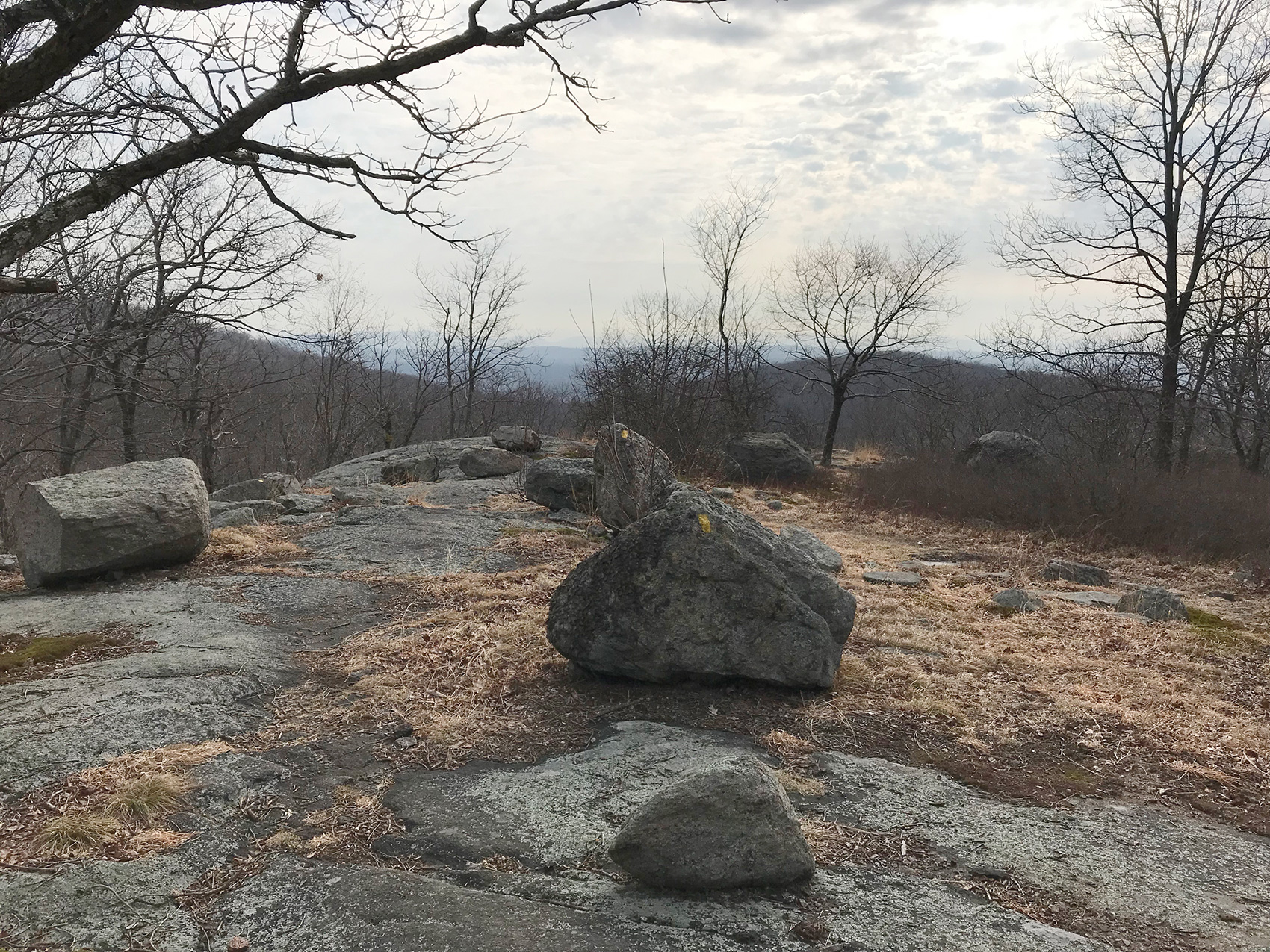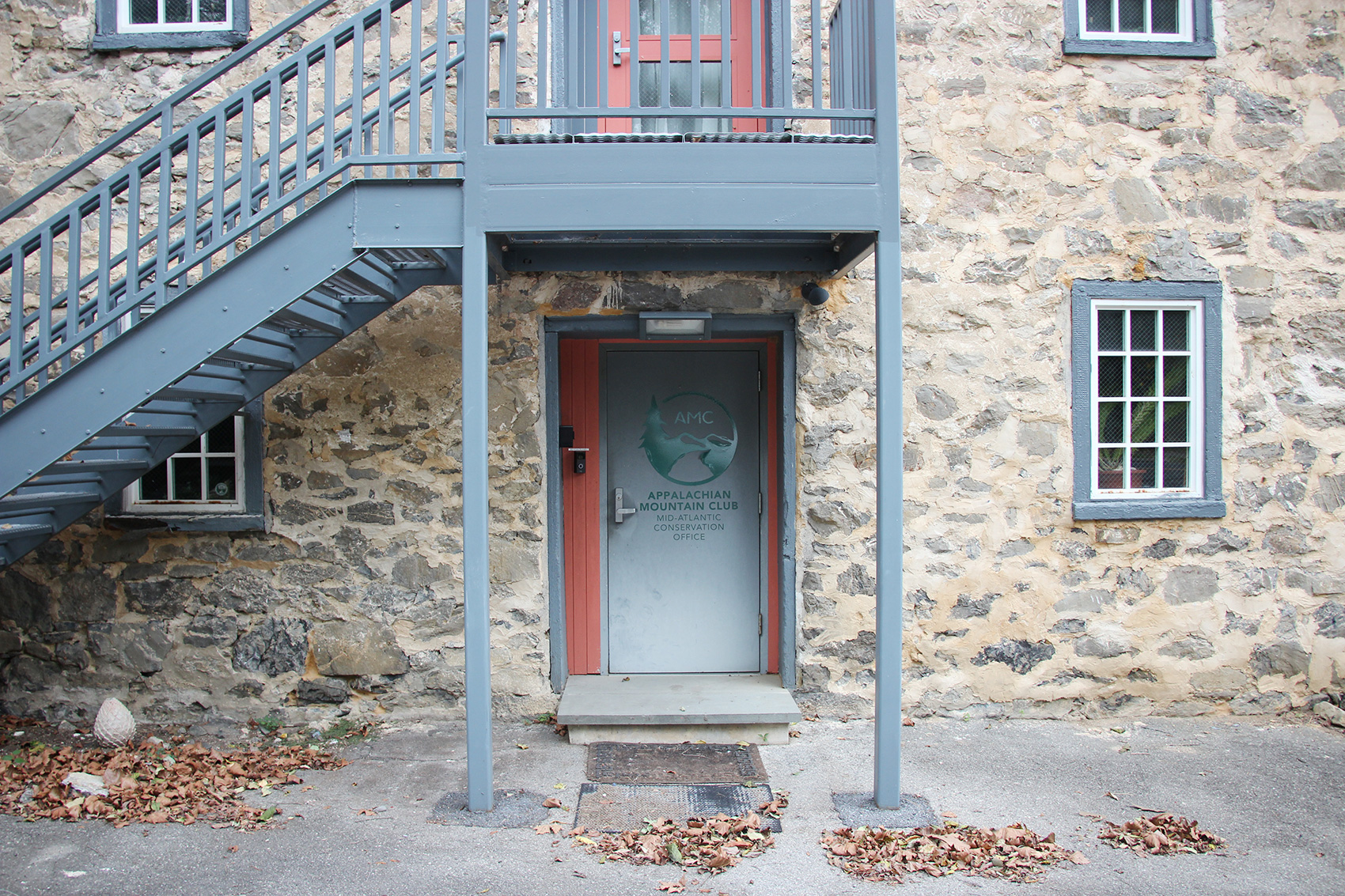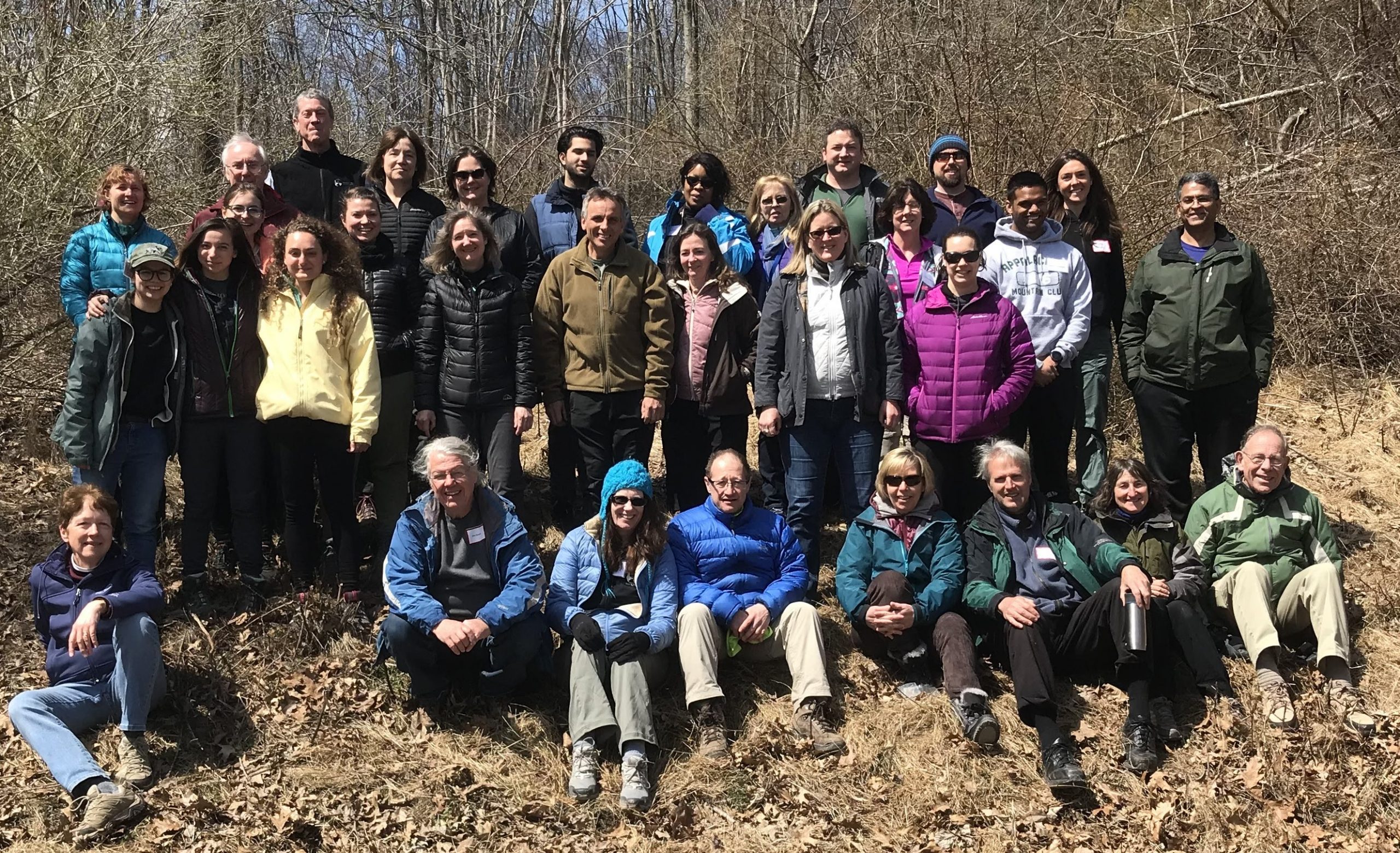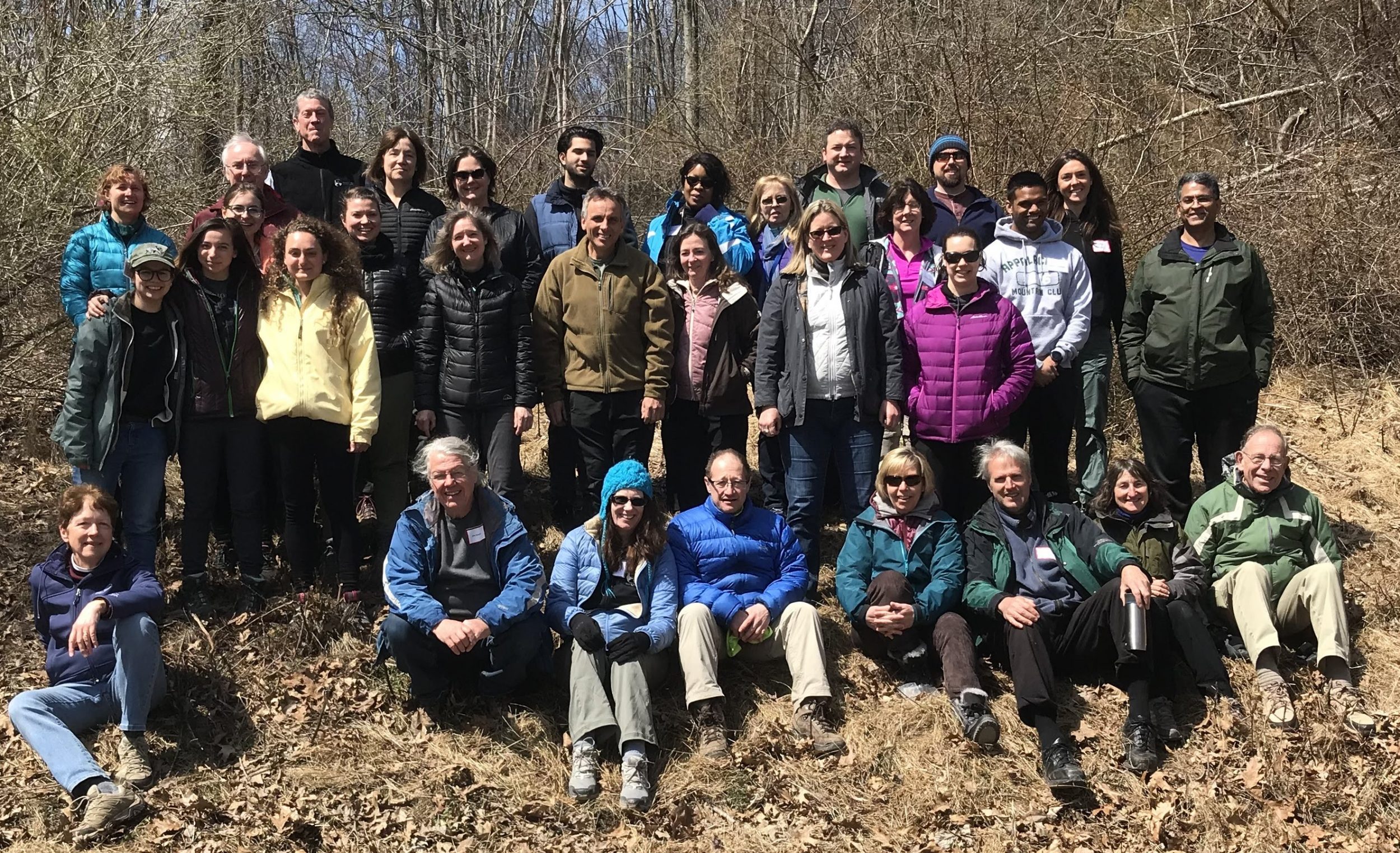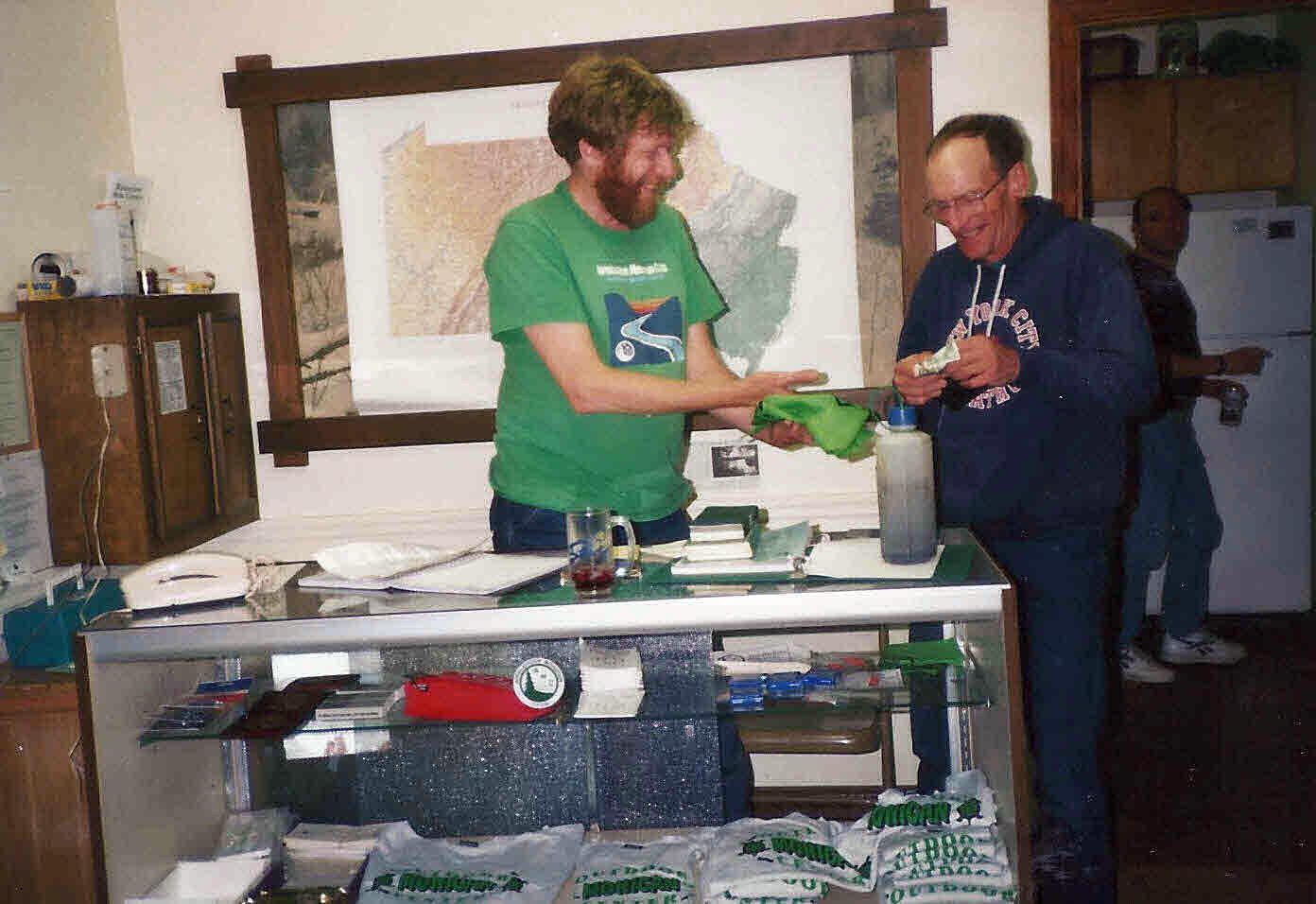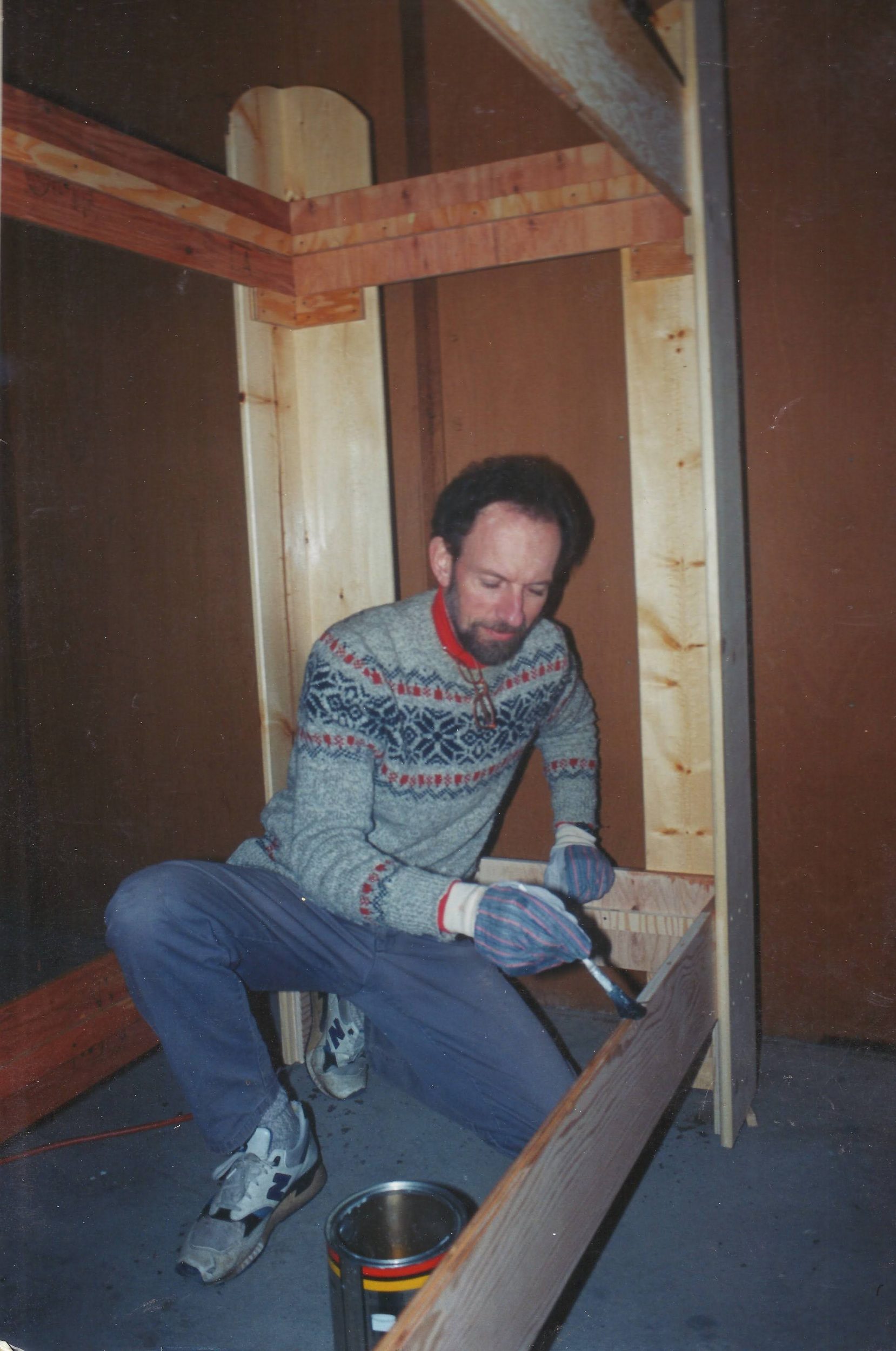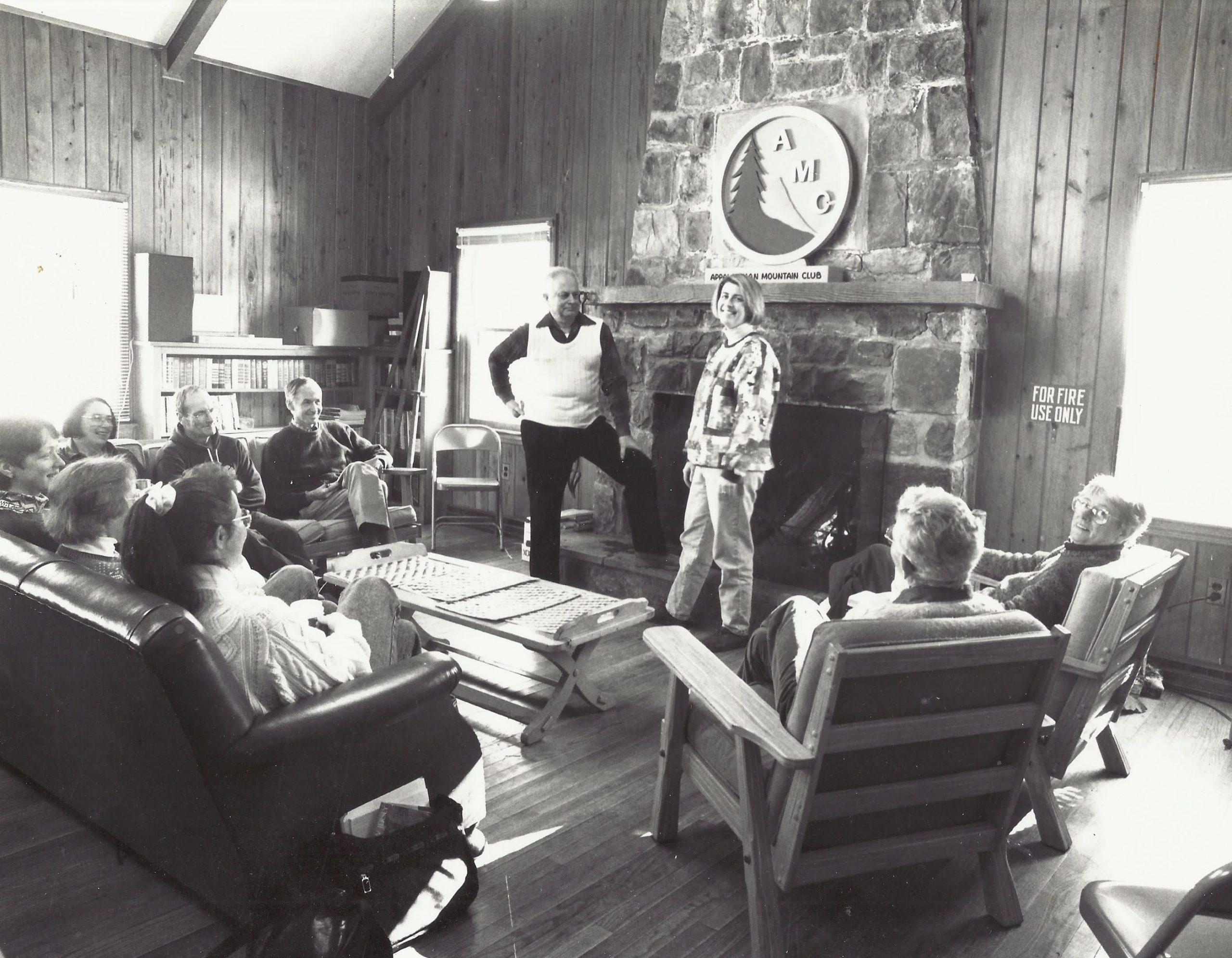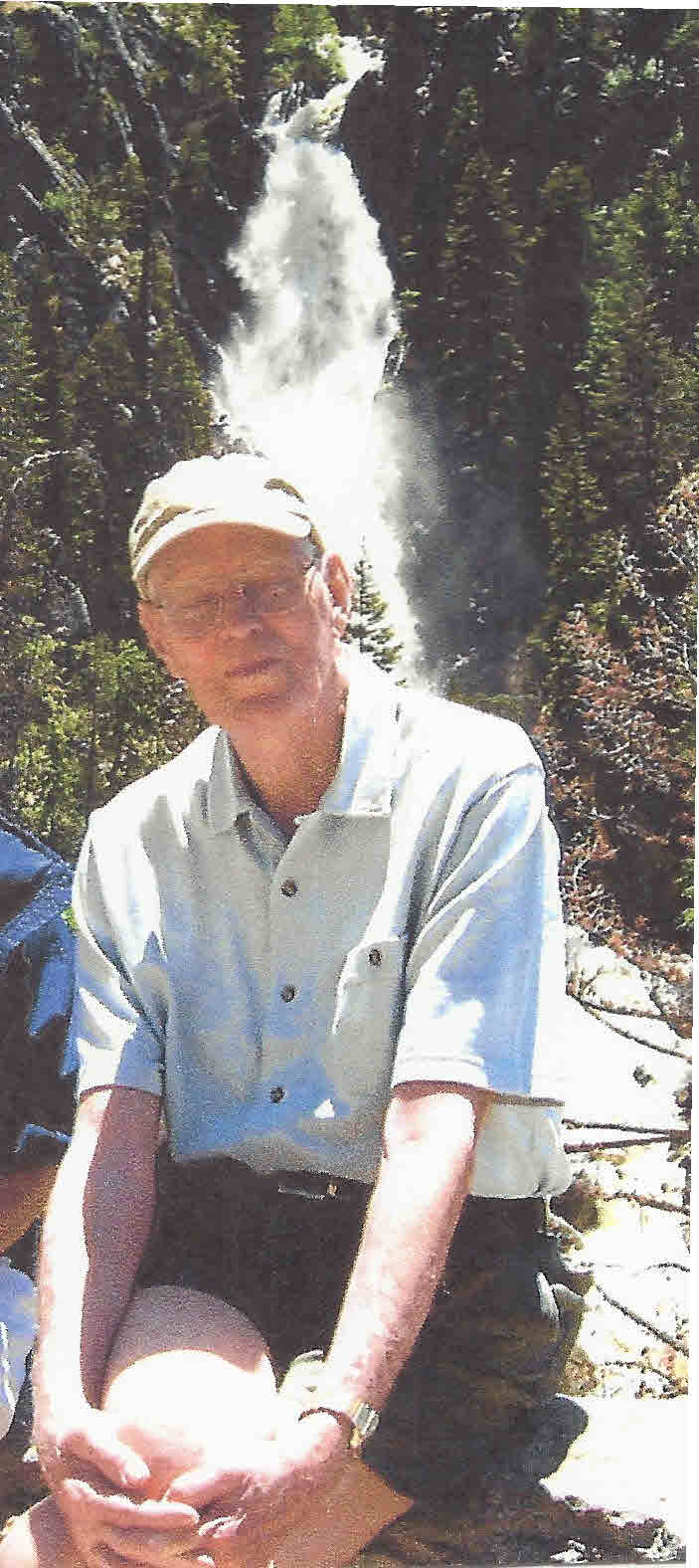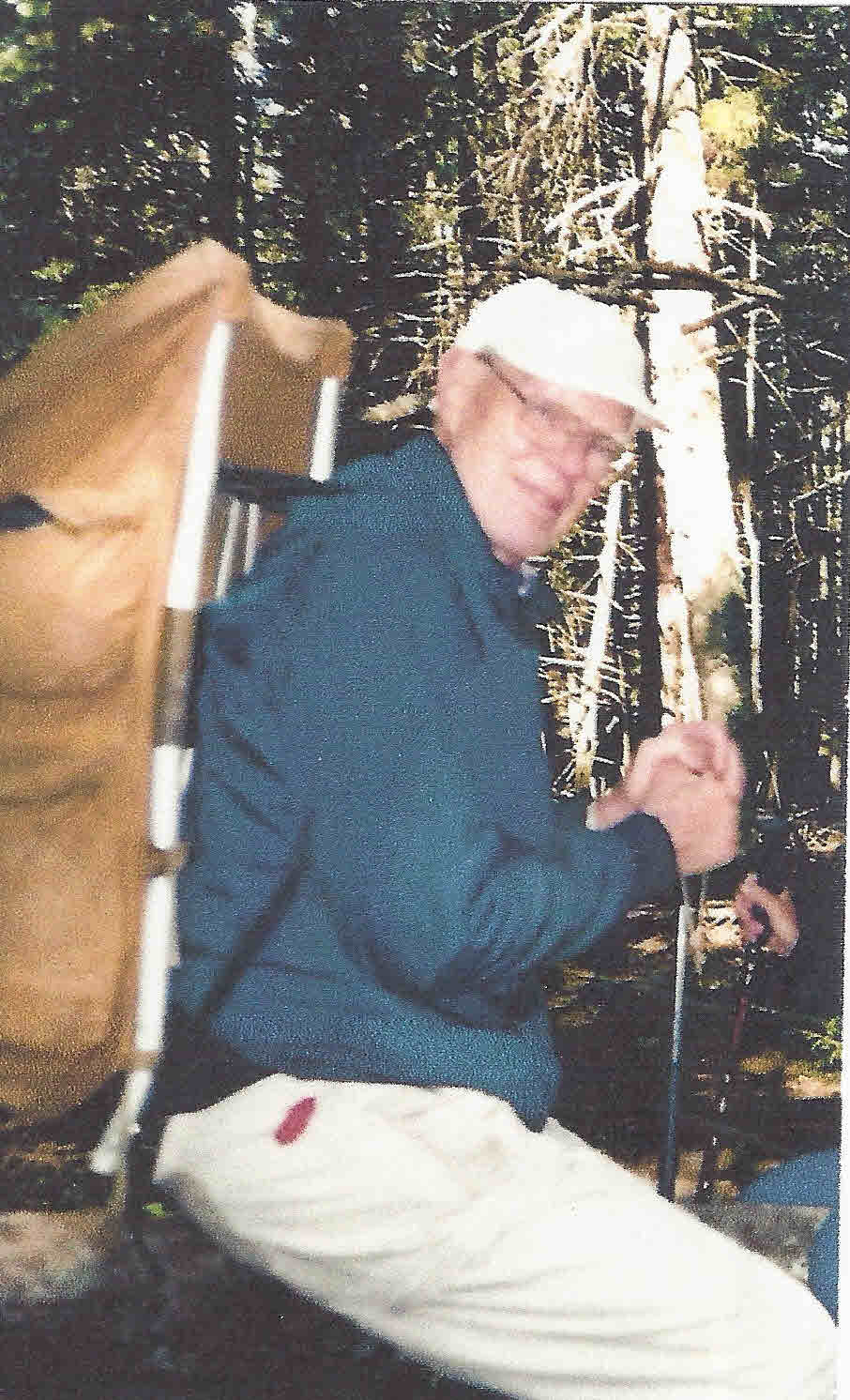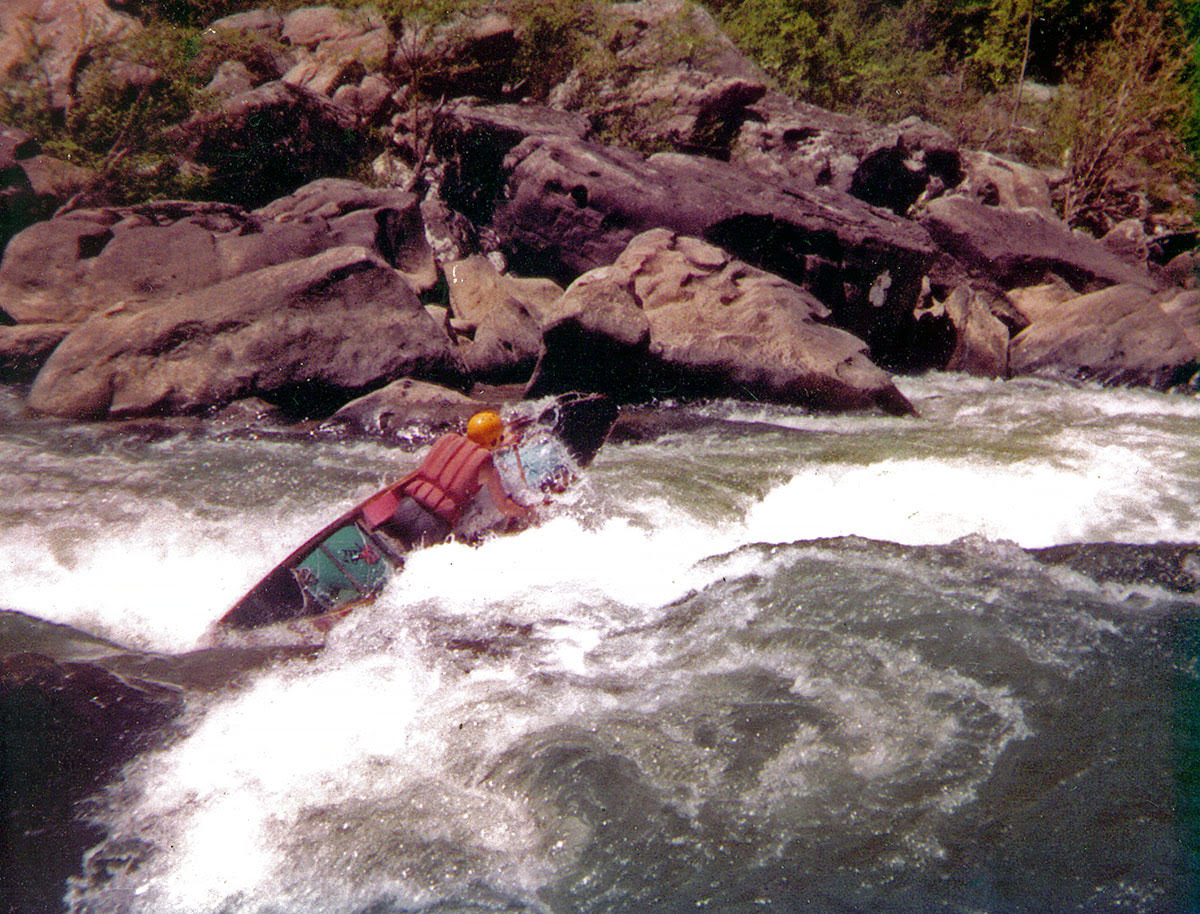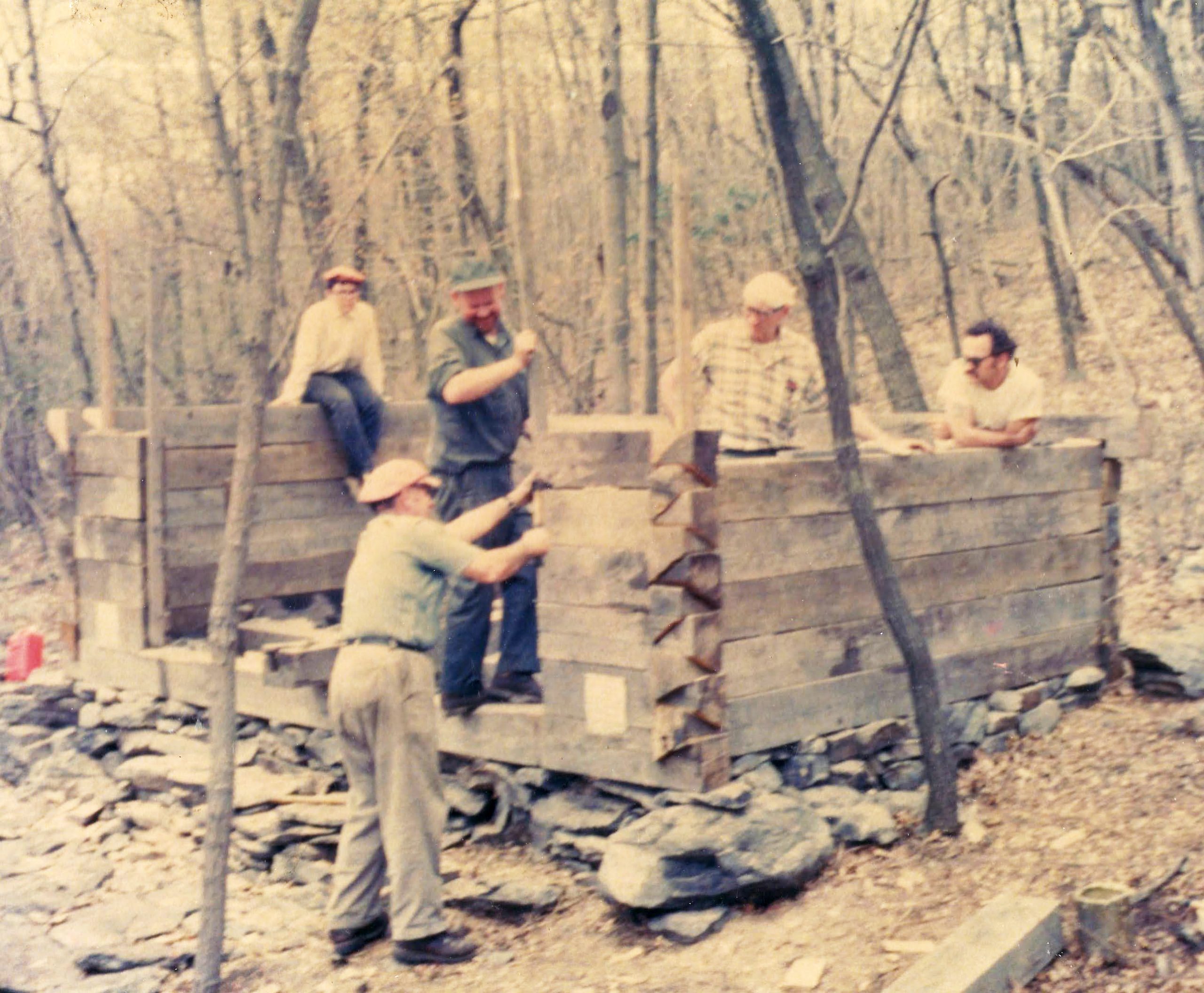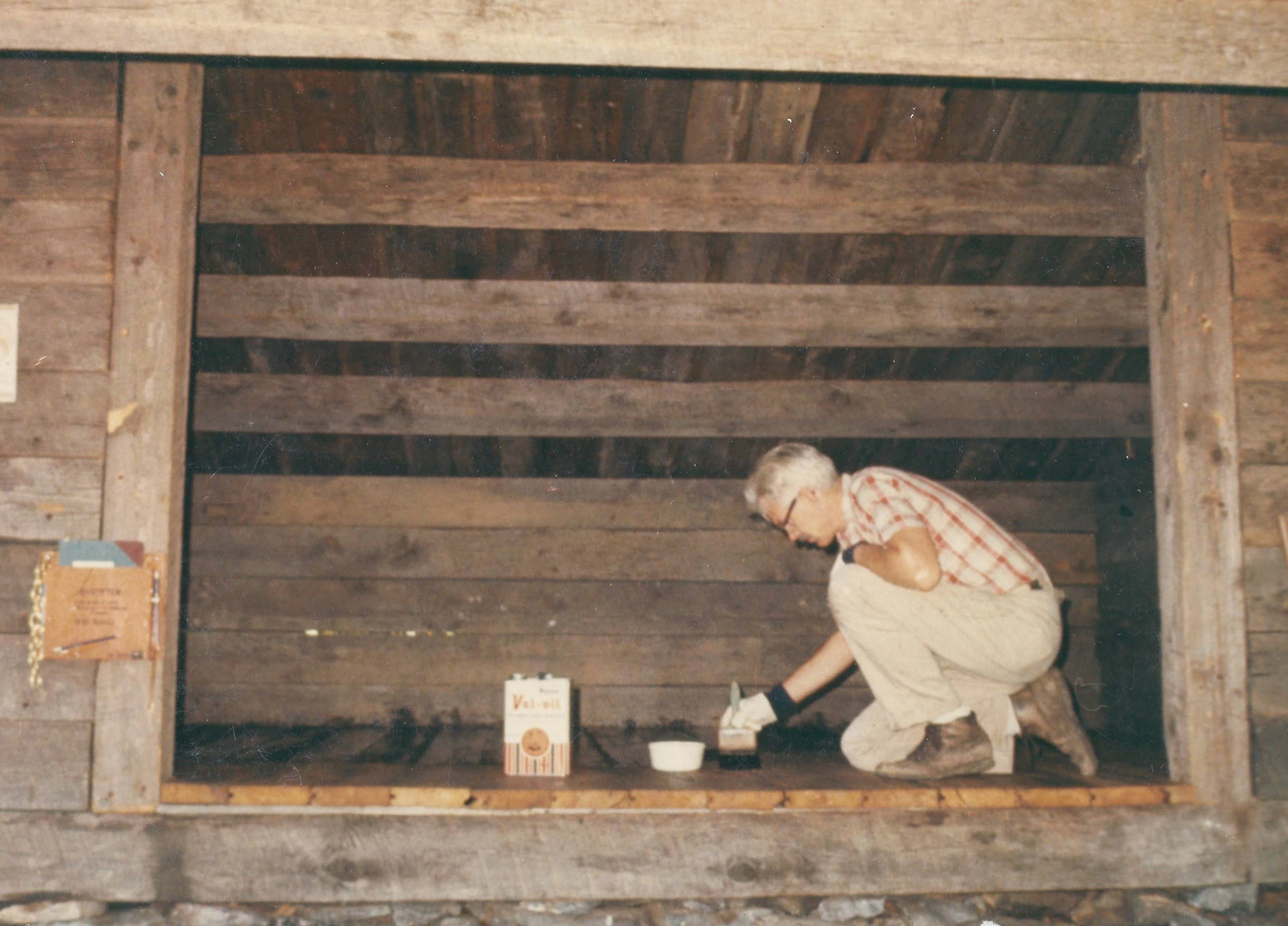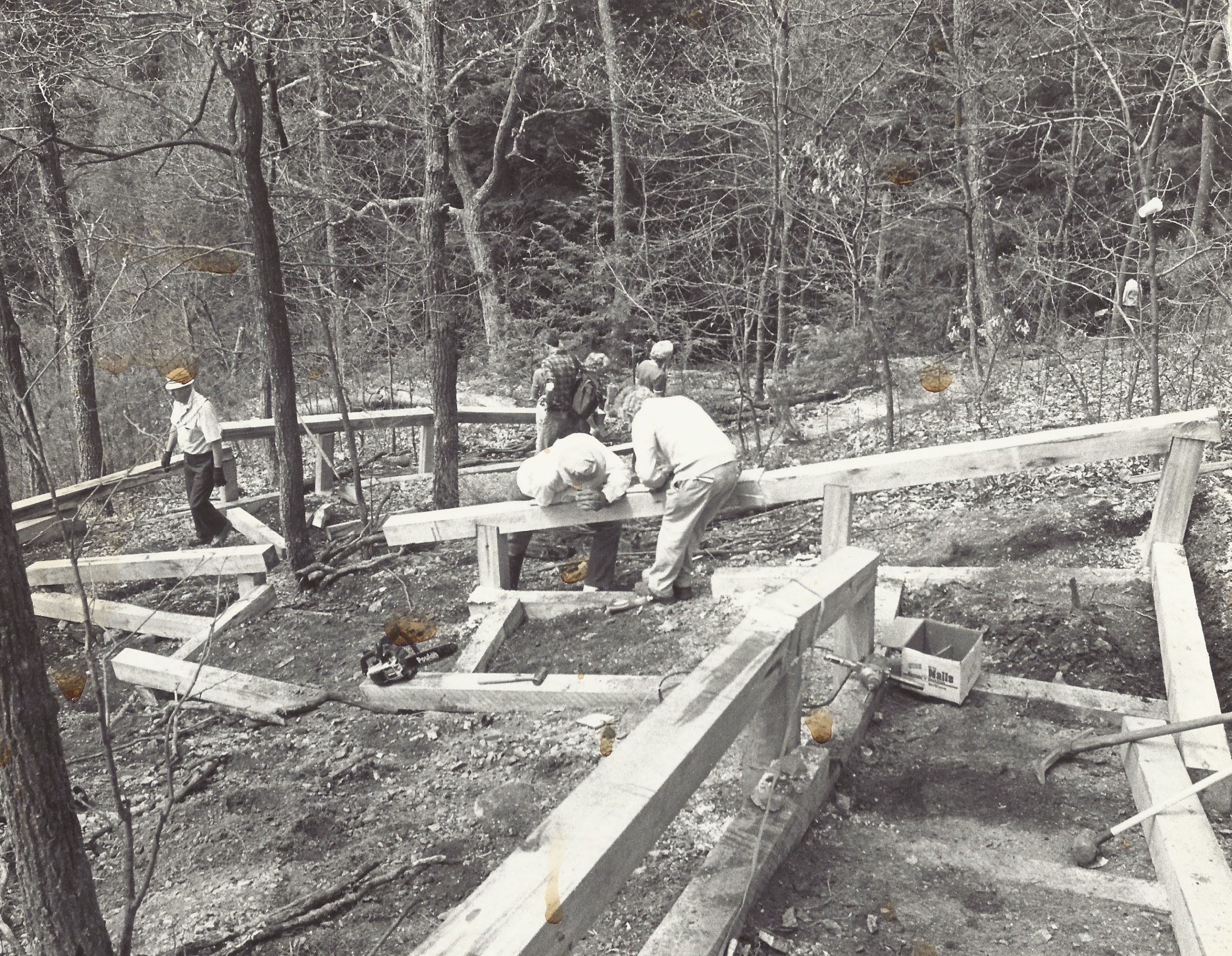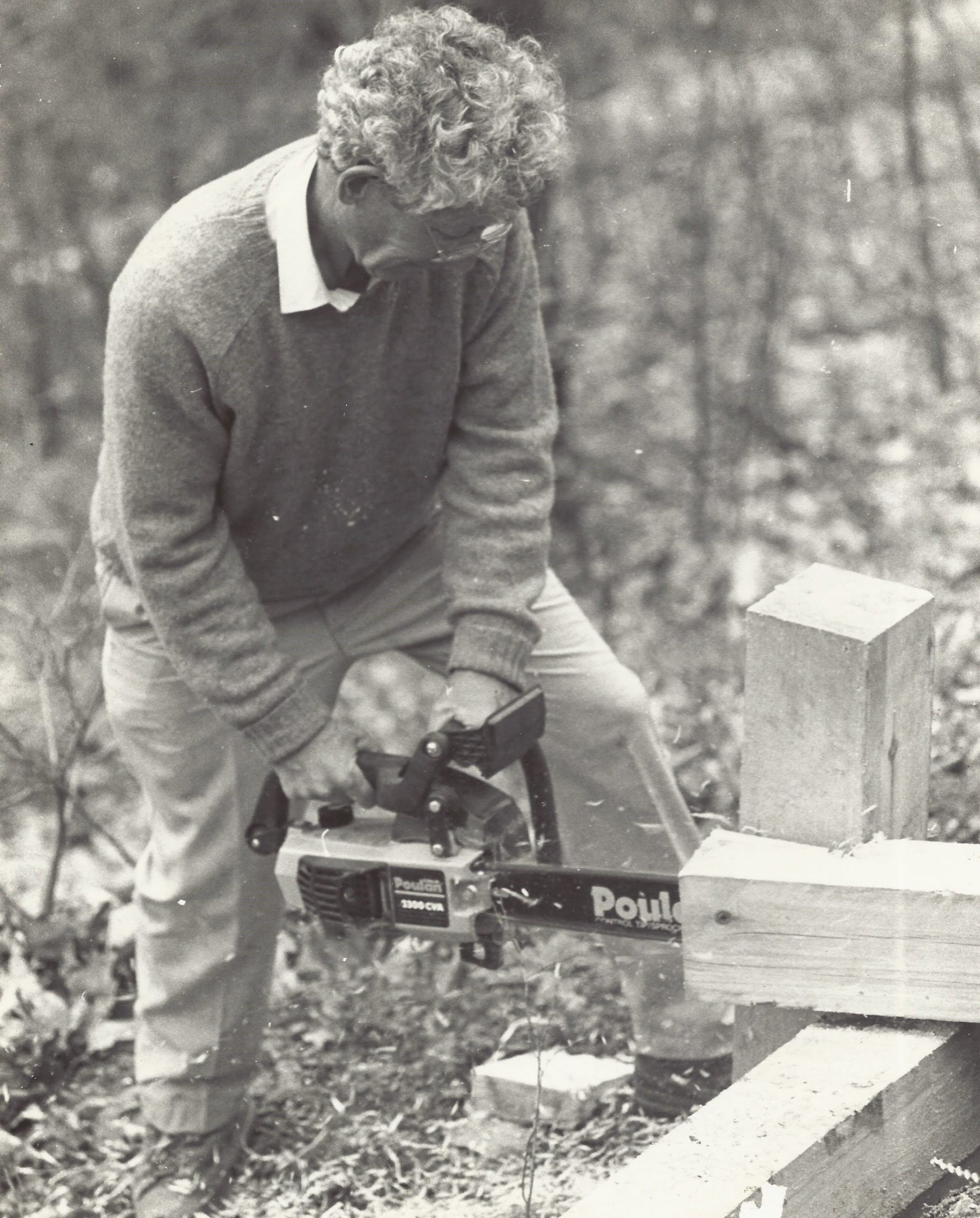A commemorative hike and ceremony were held on November 26 at the LeRoy Smith Shelter on the AT, marking 51 years to the day since it was built by Delaware Valley Chapter volunteers in 1972.
The shelter is located on a 16-mile section of the Appalachian Trail between Wind Gap and Little Gap that has been maintained by our chapter since the late sixties.
LeRoy Smith, the driving force behind building the shelter, died at an early age shortly after it was completed.
Read the story of the shelter the Summer 2017 issue of Footnotes written by Ken Graham, who participated in the construction of the shelter, and watch the video of the ceremony using the links below.

